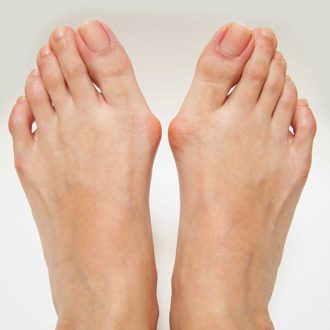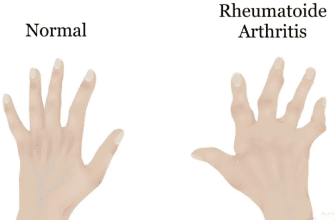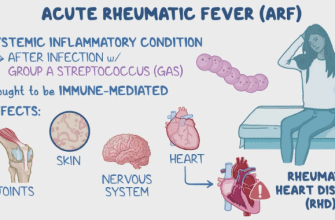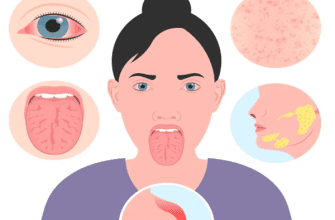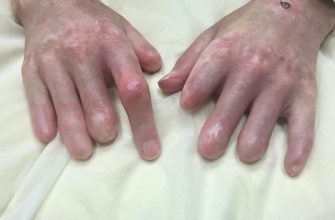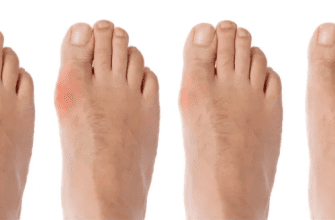Hallux Valgus: A Comprehensive Guide to Bunions
What It Is
Hallux valgus, commonly known as a bunion, is a progressive bone deformity of the foot. It involves a lateral deviation (angling away from the midline of the body) of the great toe (hallux) and a medial deviation (angling toward the midline) of the first metatarsal bone. This misalignment causes a characteristic bony bump to form on the side of the foot at the base of the big toe. It is not simply an overgrowth of bone but a complex structural issue with the foot’s anatomy.
Types
While all bunions involve the big toe joint, they are categorized based on the angle of the deformity and the patient population:
- Standard Hallux Valgus: The most common type, affecting adults, primarily women.
- Juvenile or Adolescent Hallux Valgus: Occurs in children and teenagers, often with a strong familial link. It may be less painful initially but can lead to significant deformity.
- Tailor’s Bunion (Bunionette): A similar deformity but on the outside of the foot, at the base of the little toe. It is named after tailors who sat cross-legged, rubbing the outside of their feet on the ground.
Symptoms
Symptoms often worsen over time and can include:
- The visible bump: The prominent, red, and often swollen bump on the outer base of the big toe.
- Pain and tenderness: Persistent or intermittent pain, which can range from dull and aching to sharp.
- Redness and inflammation: The skin over the bunion can become red, swollen, and calloused.
- Restricted movement: Decreased ability to move the big toe.
- Hammertoes: The big toe may angle so severely that it pushes the second toe up, causing a hammertoe deformity.
- Bursitis: Inflammation of the small fluid-filled pads (bursae) that cushion the joint.
- Difficulty wearing shoes: Trouble finding shoes that fit comfortably due to the width of the forefoot.
Diagnosis
A diagnosis is typically straightforward and involves:
- Physical Examination: A doctor (podiatrist or orthopedic surgeon) will visually assess the foot and evaluate the range of motion in the toe and joint.
- Medical History: Discussion of symptoms, family history, and footwear habits.
- Weight-Bearing X-Rays: This is crucial. It allows the doctor to see the bone alignment under the body’s weight and measure the angles between the bones (hallux valgus angle and intermetatarsal angle) to determine the severity and guide treatment.
Prevention
While not all bunions can be prevented, especially those with a genetic component, you can reduce your risk and slow progression by:
- Wearing proper shoes: Choose shoes with a wide, deep toe box that allow your toes to lie flat. Avoid high heels (over 2 inches) and pointed-toe shoes.
- Using protective padding: Over-the-counter bunion pads or moleskin can cushion the area and reduce irritation.
- Orthotics: Custom or over-the-counter arch supports can help distribute pressure evenly.
- Exercises: Maintaining flexibility and strength in the foot muscles may help.
Treatment
Treatment focuses on relieving symptoms and is always attempted before considering surgery.
- Conservative (Non-Surgical) Treatment:
- Shoe Modifications: Switching to low-heeled, wide-fit shoes is the most effective first step.
- Padding and Taping: Padding the bunion or taping the foot into a normal position.
- Medication: Nonsteroidal anti-inflammatory drugs (NSAIDs) like ibuprofen or naproxen can reduce pain and inflammation.
- Ice Application: Icing the bunion for 15-20 minutes after activity can reduce swelling.
- Orthotic Devices: Custom shoe inserts can help control the faulty mechanics that worsen the deformity.
- Corticosteroid Injections: These can provide powerful short-term relief from severe inflammation and pain.
Types of Surgery
Surgery (a bunionectomy) is recommended when conservative measures fail to relieve pain that interferes with daily activities. There are over 100 different surgical techniques, and the choice depends on the deformity’s severity.
- Osteotomy: The most common procedure. The surgeon makes small cuts in the bones (the first metatarsal and sometimes the phalanx) to realign the joint. The bones are fixed in place with screws, plates, or pins.
- Chevron Osteotomy: For mild to moderate deformities. A V-shaped cut is made in the metatarsal head.
- Scarf Osteotomy: For moderate to severe deformities. A Z-shaped cut is made along the metatarsal shaft to allow for greater correction.
- Lapidus Procedure: A fusion of the first metatarsal-cuneiform joint for severe cases with significant instability.
- Exostectomy: Removal of the bony bump from the metatarsal head. This is rarely performed alone as it does not correct the underlying alignment problem.
- Arthrodesis (Fusion): The damaged joint surfaces are removed and the bones are fused together. This is used for severe cases, arthritis, or failed previous surgeries.
- Resection Arthroplasty (Keller Procedure): Removal of the damaged portion of the joint. It is typically reserved for older patients or those with severe arthritis.
Prognosis
The prognosis is generally excellent.
- Non-Surgical: Conservative treatments are very successful at managing pain and slowing progression but will not reverse the deformity.
- Surgical: Over 90% of patients are satisfied with the results. Recovery can take several weeks to months, requiring a period of non-weight-bearing or limited weight-bearing. Full recovery with decreased swelling can take 6-12 months. recurrence is possible but not common with proper procedure selection.
Warning Signs & When to See a Doctor
You should schedule an appointment with a podiatrist or orthopedic surgeon if you experience:
- Persistent pain in your big toe or foot that makes walking difficult.
- A visible, growing bump on the side of your foot at the base of the big toe.
- Decreased movement or stiffness in your big toe.
- Difficulty finding shoes that fit due to the width of your forefoot.
- Any signs of infection (like an open sore or severe redness) around the bunion, especially if you have diabetes or poor circulation.
